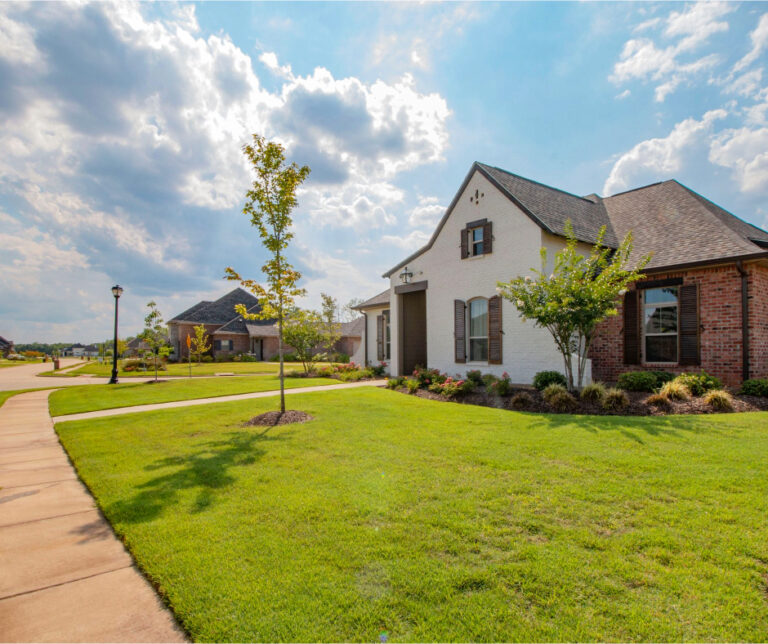This guide covers qualifying for a mortgage after bankruptcy and foreclosure on government and conventional loans. Homebuyers can qualify for a mortgage after bankruptcy and foreclosure after the mandatory waiting period requirements.
Homebuyers with prior bankruptcy, foreclosure, deed-in-lieu of foreclosure, or a short sale are eligible to buy a home again with FHA, VA, USDA, or conventional loans.
They need to meet mandatory mortgage guidelines before applying for a mortgage after bankruptcy and foreclosure. Mortgage guidelines after bankruptcy and foreclosure has different waiting period depending on the loan program.
HUD Guidelines For Mortgage After Bankruptcy and Foreclosure
There is a mandatory 2-year waiting period for a mortgage loan borrower to qualify for FHA loans after the discharge date of bankruptcy. There is a mandatory waiting period of 3 years from the recorded date of a foreclosure or a deed-in-lieu of foreclosure to qualify for FHA loans.
There is a three-year mandatory waiting period from the date of the HUD on a short sale if the borrower has been delinquent on their mortgage payment before the date of the short sale.
If the borrower has been timely on their mortgage payments and all other payments for 12 months before the short sale date, there are no waiting period restrictions. This means the borrower needs to have been timely up to the short sale date with their mortgage and all other monthly payments.
Rebuilding Credit After Bankruptcy And Foreclosure
Please do not assume that you are automatically qualified for a residential mortgage loan because you have passed the mandatory waiting period after a bankruptcy, foreclosure, deed-in-lieu of foreclosure, or short sale. You cannot assume you will automatically get Fannie Mae’s Automated Underwriting System approval. ‘
Many homebuyers assume that they will automatically qualify for a residential mortgage after bankruptcy and foreclosure. Most borrowers will often with not have a problem qualifying for a mortgage after bankruptcy and foreclosure after they meet the waiting period requirements.
Sometimes, homebuyers give a home builder a 10% non-refundable down payment six or more months before their waiting period. They stress during the mortgage application process. Luckily, most of our borrowers ultimately closed on their homes. There are risks in purchasing a home without automated approval.
Do I Need Pre-Approval To Make Offer: Automated Approval
Let’s say you just passed the waiting period after your bankruptcy, foreclosure, deed-in-lieu of foreclosure, or short sale. Does this automatically qualify you for a mortgage loan and guarantee a mortgage loan approval?
You can qualify for a government and conventional mortgage after bankruptcy and foreclosure. However, there are waiting period requirements after bankruptcy and foreclosure.
Meeting the waiting period requirements after bankruptcy and foreclosure does not guarantee you a mortgage loan approval and a set clear to close. Lenders require re-established credit after bankruptcy and foreclosure. Many lenders have their lender overlays. Many times, it can override an Automated Underwriting System approval.
Case Scenario on mortgage after bankruptcy and foreclosure
We recently closed on a conventional mortgage loan. The client had a deed-in-lieu of foreclosure four years ago and had entered into a real estate purchase contract six months before the 4th anniversary of their waiting period. Homebuyers put a 10% non-refundable earnest money deposit with a home builder. The home was practically done when the homebuyer came to us to apply for a loan.
There is a 5% minimum down payment requirement for aconventional loan after a 4-year waiting periodfrom the recorded date of a deed-in-lieu of foreclosure.
We ran the client’s mortgage application through the automated system and got the approval. We reviewed their case scenario with several wholesale lenders and had the underwriters review the file. We presented this mortgage application to 18 wholesale lenders. 15 did not want to touch it even though the borrower had a 25% back debt-to-income ratio, great job stability, reserves, and compenating factors. Five wholesale lenders wanted to look at it and did a soft underwrite. Four of them took a pass. We got one wholesale lender who took the deal. We got this deal approved mainly due to a phenomenal underwriter who thought outside the box and looked at the overall picture.
Credit Guidelines to qualify for a mortgage after bankruptcy and foreclosure
In this section, we will cover why mortgage underwriters turned down and denied mortgage loan applications. Lenders want to see three to five credit tradelines seasoned for two years.
Underwriters can turn down files for not enough re-established credit. You can also get turned down for a mortgage after bankruptcy and foreclosure if you have late payments.
Another reason for denials is borrowers had prior debt settlements. Many lenders consider debt settlement the same as bankruptcy. Others consider debt settlement worse than bankruptcy because they can file for bankruptcy. With bankruptcy, you cannot file another bankruptcy for another seven years.
Verification of Rent
Rental verification is required on manual underwriting. Rental verification is one of the most important factors in the mortgage process. Paying rent with cash does not count as verification of rent. Always pay your monthly rental payments in check. Borrowers need 12 months of canceled checks for rental verification to be valid unless the landlord is a licensed property management company. Declining income can be a reason for a mortgage loan denial. Borrowers with a 20% plus percent wage reduction will be scrutinized.
How Lenders Price Mortgage Rates
The risk factors of lenders determine mortgage rates—lenders base pricing of mortgage risk on loan-level pricing adjustment. Loan-level pricing adjustments are pricing hits for mortgage rates. The risk versus reward factor applies. The higher the risk for lenders, the higher the rate lenders charge.
Why Do I Need Pre-Approval To Make Offer On Home Purchase
Homebuyers should only enter into a real estate real estate purchase contract with a solid pre-approval, not a pre-qualification. You should have a solid pre-approval with an automated underwriting system AUS approval before signing a real estate purchase contract. For example, a homebuyer enters a real estate purchase contract with a builder. The house did not break ground and will be done after six months. The homebuyer does not qualify now but assumes they will qualify in six months.
The homebuyer is taking a huge risk by putting down a 10% non-refundable down payment on a home purchase with a builder. It is strongly recommended home buyers do not assume they will get approved and enter into a home purchase contract with a non-refundable earnest money deposit.
Home values in Florida have been increasing year after year. As months pass, the home value could keep increasing, but there is no guarantee. Their new construction home could be worth more in six months. With the housing shortage and demand for homes, their new construction home will probably increase in value. Say it does, but is the stress worth it? The borrower would lose sleep for months.
Credit Reports Contain Errors
There are many times after you have waited out the waiting period after a bankruptcy or foreclosure and get a Fannie Mae Automated Underwriting System denial. Why? Credit reports often contain errors and the Automated Underwriting System goes by the credit reports.
In the event that the credit reporting agencies report a deed-in-lieu of foreclosure as a foreclosure, borrowers will get denied by AUS if they do not meet the waiting period requirements.
In other situations, student loans they are currently paying are reported as they were in collections so that they will get denied. Borrowers cannot qualify for an FHA loan if they are behind on any government loan. In cases like these, they need to correct their credit report and have the correction reported on the credit report. Borrowers then need to have their loan officer rerun their credit report and then rerun it through the Automated Underwriting System. The mortgage loan originator should help with that.
UPDATE On Conventional Loans After Bankruptcy and Foreclosure

The two-year waiting period to qualify for Conventional loans with a 20% down payment has been discontinued.
The waiting period to qualify for Conventional loans after a short sale and deed-in-lieu of foreclosure is now 4 years. A 5% down payment is required. There is still a seven-year waiting period to qualify for Conventional loans after a regular foreclosure. The waiting period is four years to qualify for Conventional loans after the Chapter 7 bankruptcy discharge date.







